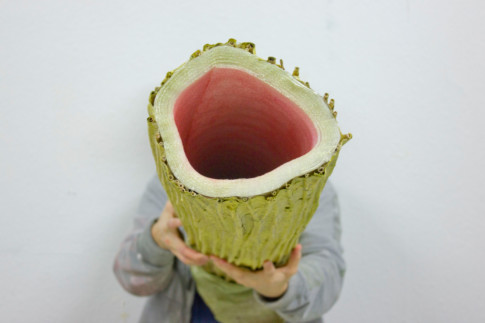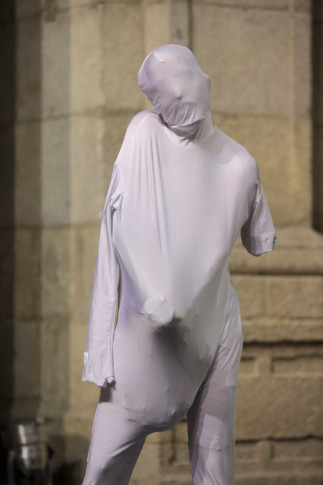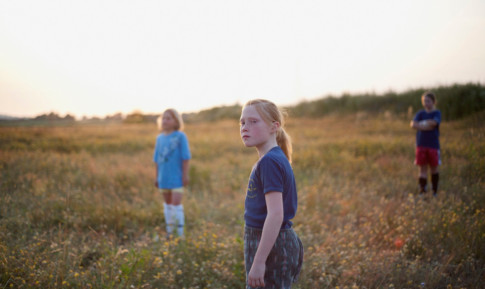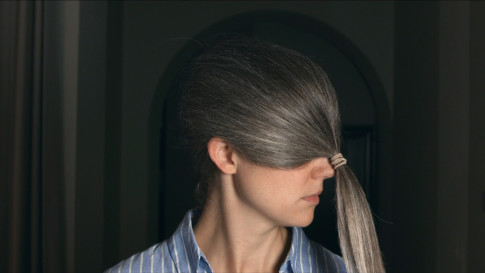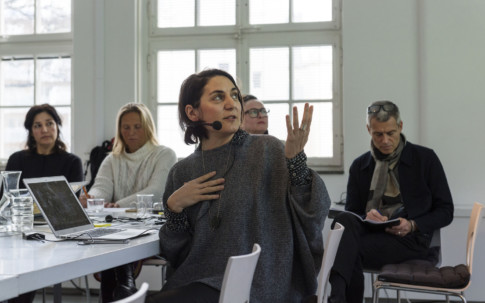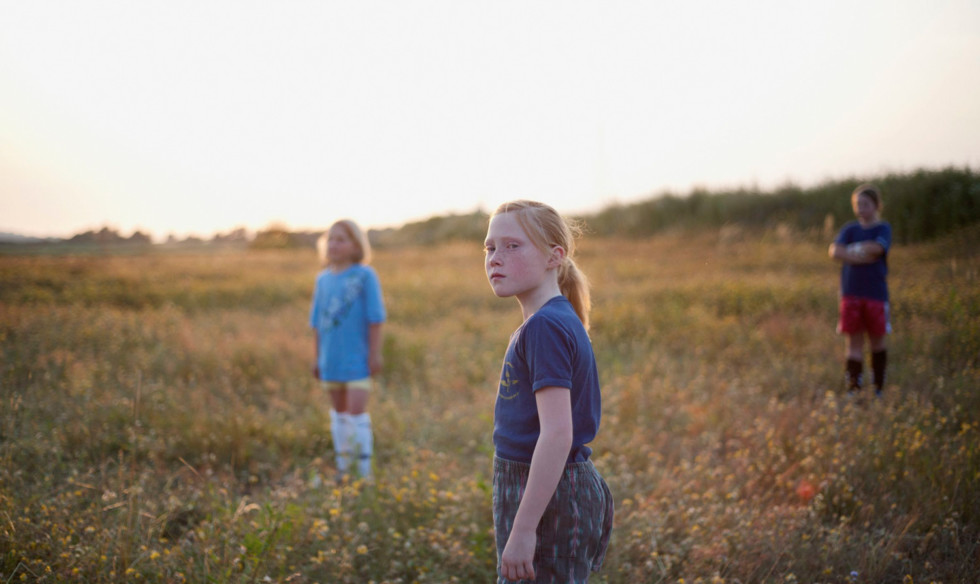
John Skoog, Sent på Jorden: Sammie, Emilia & Erica, 2011 Production image from the film. Photo: Emma Blomberg © John Skoog
With the Future Behind Us
When speaking of the past, the Aymara will gesture to the space in front of themselves, extending their arms even further to speak of ancient times. When speaking of the future, which they see as unknown or unknowable, they point or wave behind their backs. This worldview lies in stark contrast to the bodily orientation of Indo-European time, where the Ego faces the future and the present passes all too quickly into an unseen and soon forgotten past.
This vision of the past as holding a key to the present permeates many of the practices that we encountered during our research process. Political developments across the world combined with the growing reality of catastrophic climate change, also require us to confront the power structures and political priorities that have determined where we stand today.
The Moderna Exhibition 2018 therefore offers an opportunity to look more closely at Swedish society, and its place in the world, through art. Several of the participating artists look back into Swedish history, exploring events that have shaped and reshaped their way of life. Others highlight alternative experiences of coming to or living in Sweden today.
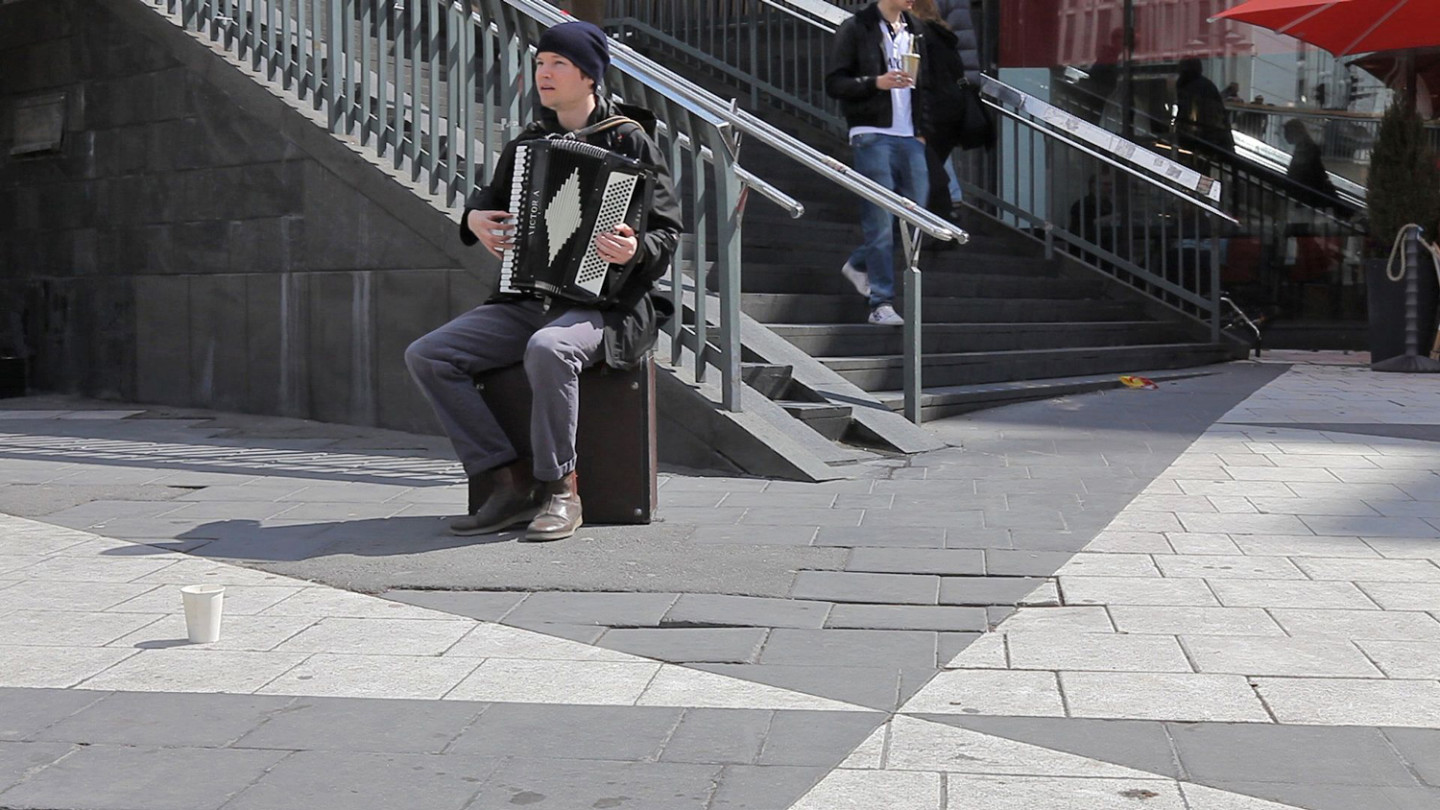
The exhibition is constructed around four thematic groupings that grow organically in and out of each other in the exhibition halls and public spaces of the museum. From the body as a site of social pressure or political control, to our relationships both to nature and the mediated urban environment, we are guided through a wide range of artistic perspectives on our contemporary time. Further along, we take inspiration from artists who look to underrepresented histories or outward to a more spiritual realm.
The Vulnerable Body and the View of the Other
In many of the practices we have gotten to know in the course of our research, the human body has played an especially prominent role. This is not the body emphasised in an exalted manner but rather the battlefield of ideologies and financial interests embodied: the human form controlled and penetrated by new technologies, measured and categorised, squeezed between norms and ideals, or distorted by fear and violence.
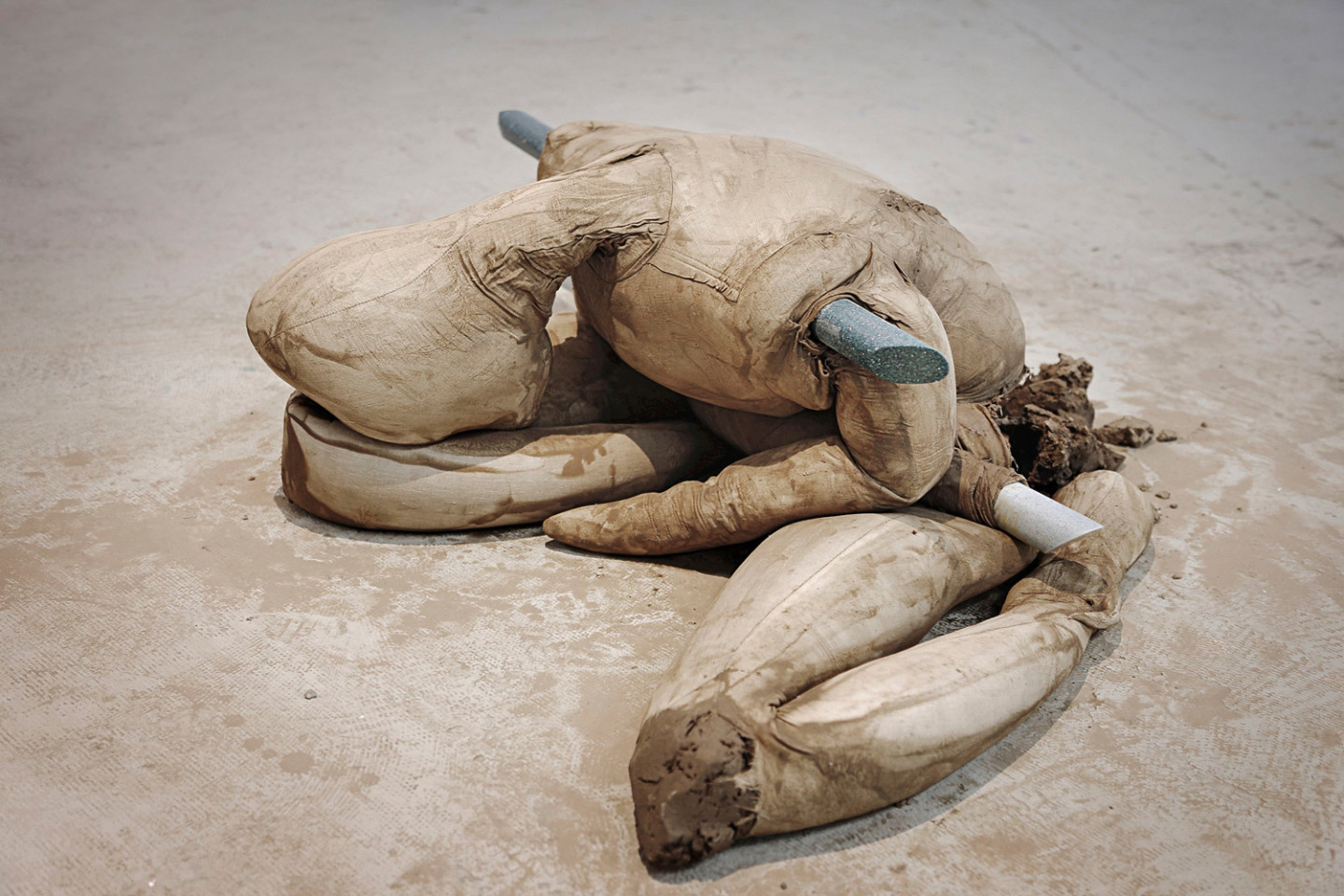
In the exhibition’s first gallery we are confronted by Muhammad Ali’s hybrid beings – once human but now mutated into something other, something transformed. Sometimes their bodies swarm like insects in large groups, forming architectonic shapes or Arabic script. They are monstrous and their reality is hell on earth. The drawings were prompted by Ali’s walks around Damascus before his decision to flee, in 2015, across the Mediterranean and eventually to Sweden, where he now lives and works.
A bit further into the exhibition, Ingela Ihrman’s ”The Giant Hogweed” (2016) sprawls across the floor – an enlarged replica of the plant Heracleum mantegazzianum, a dreaded weed whose phototoxic sap causes serious burns. The Giant Hogweed spread rapidly in Europe and North America after it was introduced as an ornamental plant in the nineteenth century. Today it is classified as an invasive species that constitutes both an economic and ecological threat. Seen within the context of Ihrman’s practice, it’s possible to interpret this giant sculpture as an expression of all-consuming passion, brought about by intense seduction and gradually resulting in the suppression of one’s own will. In relation to several other works shown in proximity to it, Ihrman’s sculpture also becomes an expression of the fear of the Other, a fear of the unknown.
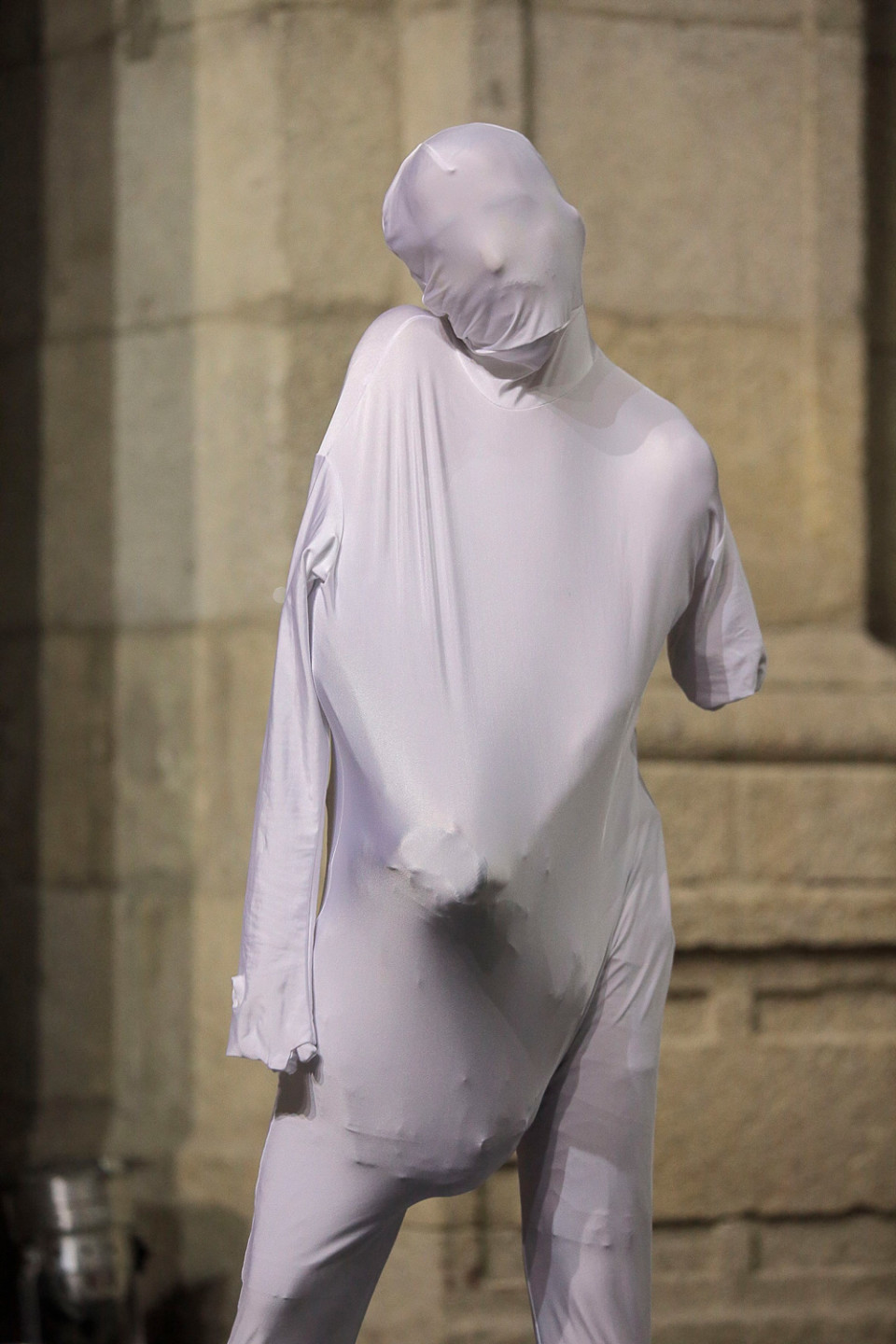
Several works in the exhibition look back in history to understand how different groups of people were viewed in the past, and how that still influences us today. Britta Marakatt-Labba’s textile work ”Händelser i tid”(Events in Time) (2013) is embroidered onto German sackcloth that was used to transport grain through Sweden during the Second World War, and which ended up in the possession of the artist’s relatives. When stepping into the circle formed by the sacks, we are faced with embroidered motifs of Anders Behring Breivik’s terror attack on Utöya in 2011. A little further into the exhibition, Hanni Kamaly’s video ”Head, Hand, Eye” (2017) deals with how the dehumanisation of the Other has often taken the form of bodily fragmentation, which in turn has reinforced racist and colonial perceptions.
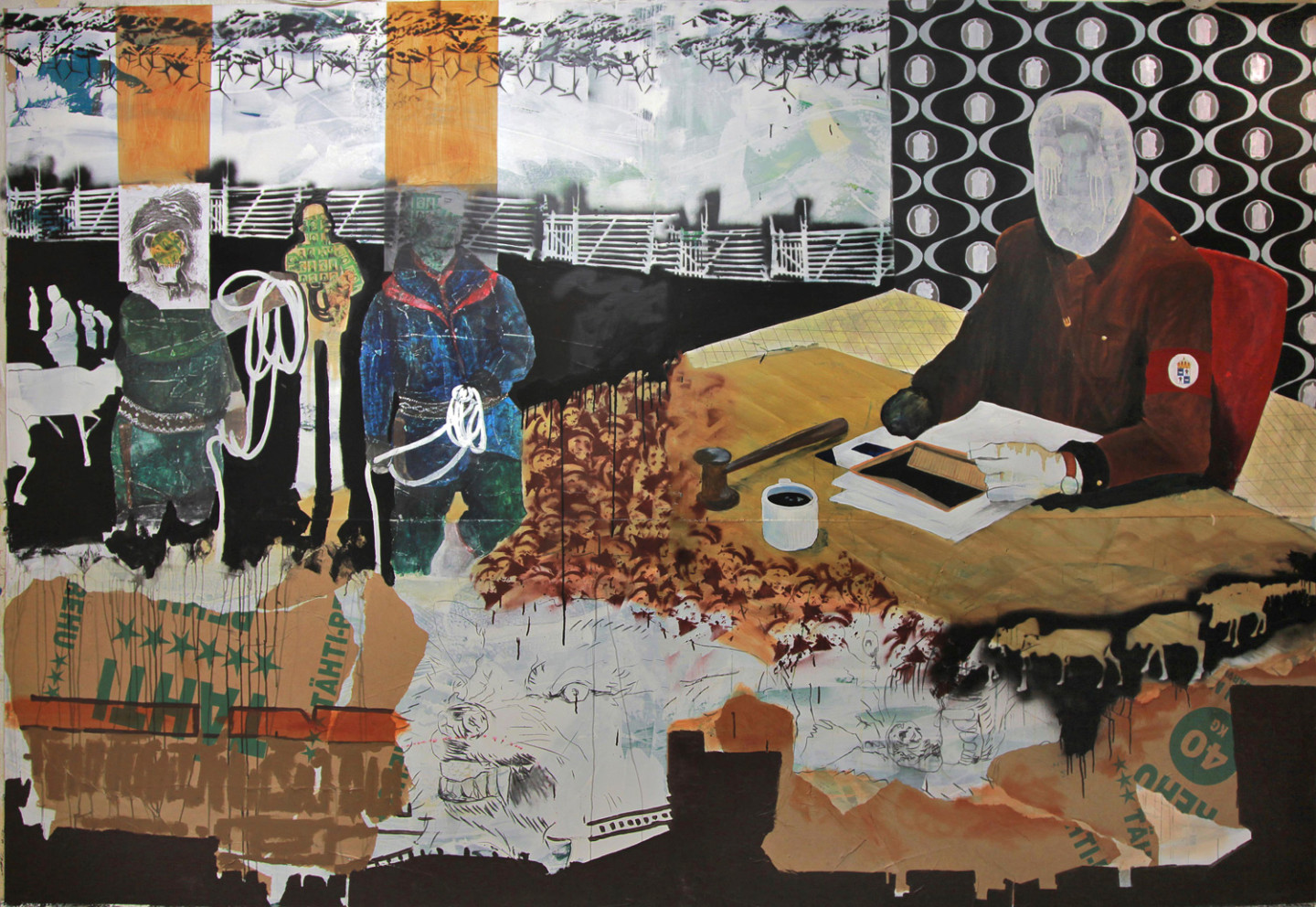
Using science as a weapon to categorise an ethnic group as inferior has frequently gone hand in hand with the takeover of the land and assets of that same ethnic group. Anders Sunna’s large-scale paintings reflect his family’s longstanding conflict with the Swedish state regarding their right to herd reindeer in the way his family has done since time immemorial. These paintings also contain references to the history of institutional racism in Sweden: the towering façade of the State Institute for Race Biology reoccurs in several of the works, as well as images of crania and bone parts that refer to the exhumation of Sami remains as part of the Institute’s research.
Man and Nature in Modern Sweden
The emergence of modern Sweden saw a marked increase in the welfare and comfort of the population. At the same time, life was streamlined and the natural landscape was transformed. Kalle Brolin’s video ”Jag är Skåne” (I Am Scania) (2016) takes us on a journey through time to the southern parts of Sweden. In his film, Brolin returns to the beginnings of industrialism and highlights how the coal and sugar industries in Scania collaborated. While coal was sold as fuel for the sugar refinery, sugar was marketed as fuel for the miner, to detrimental effect.
Much further north, Erik Mikael Gudrunsson’s photographic series ”Resa i Norrland” (Journey in Norrland) (2008) retraces the steps of the celebrated botanist Carl Linnaeus during his Lapland excursion of 1732. It was Linnaeus’ first research trip and, according to the artist, principally aimed at charting natural resources in the Swedish north; providing suggestions for how best to exploit or cultivate the land. By taking photographs of the current state of the places Linnaeus visited in 1732, Gudrunsson makes visible the enormous transformation of the natural landscape that has taken place in less than three hundred years. What emerges in the 150 photographs being shown in the exhibition is not cities, villages, mill towns or forests, but instead a kind of industrialised nature deprived of both life and soul.
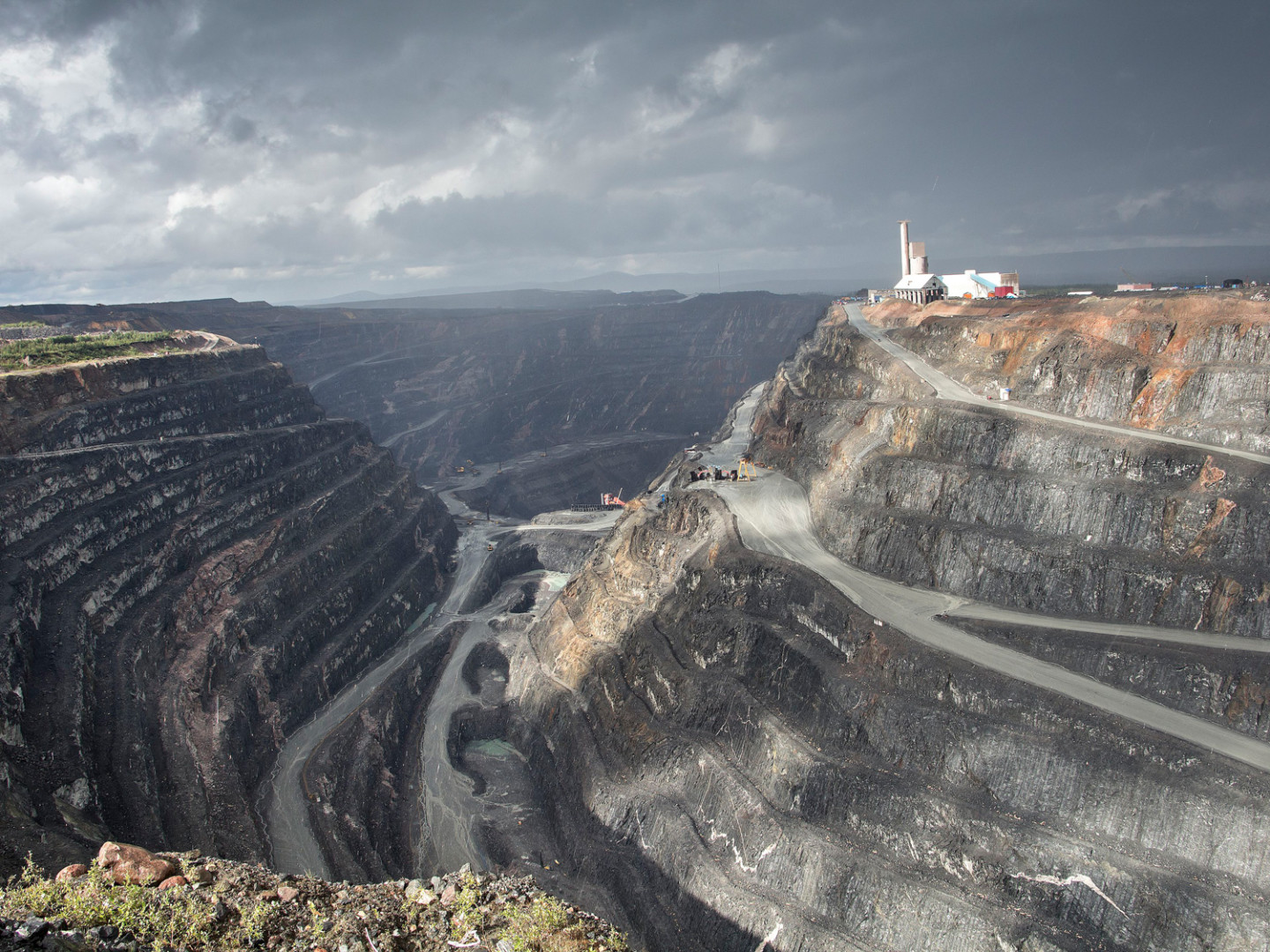
A similar landscape is depicted in Fanny Carinasdotter, Anja Örn and Tomas Örn’s joint art project ”Att använda landskap” (Using Landscapes) (2016–2017). Projected still images show us views of a massive hole in the bedrock, the Aitik open-pit mine in Sakajärvi. The work brings together the voices of people living in the area and employees of the mining company, and confronts us with the philosophical question: when does nature actually stop being nature?
A Civilisation at the Limits
In the illustrated book ”Det som en gång var” (What Once Was) (2016), Helena Granström reflects on the culture – her own – that has allowed this unparalleled destruction of its habitat:
”In our cultural mythology there is no environment to form a relationship with; what exists are resources to exploit, materials to process. If the actual apparatus of production works by converting that which is alive into that which is dead – trees to paper, mountains to tin cans – the cultural creation of myths functions in the same way, although much more efficiently: Trees and mountains aren’t really alive, are they? There is no killing because there was never any life to take. A narrative of this kind is both a prerequisite for and a consequence of the massive devastation we are witnessing today. For a culture based on exploitation the only option is to deny that the exploited are subjects.” p.13
It might be symptomatic of an era characterised by enormous increases in population and alarming reports on climate change that many artists are also describing our civilisation as having reached a critical threshold. Not only have we caused the extinction of many species of flora and fauna and damaged the ecological systems of the planet irreversibly, but our way of life is also undermining the conditions necessary for our own survival.

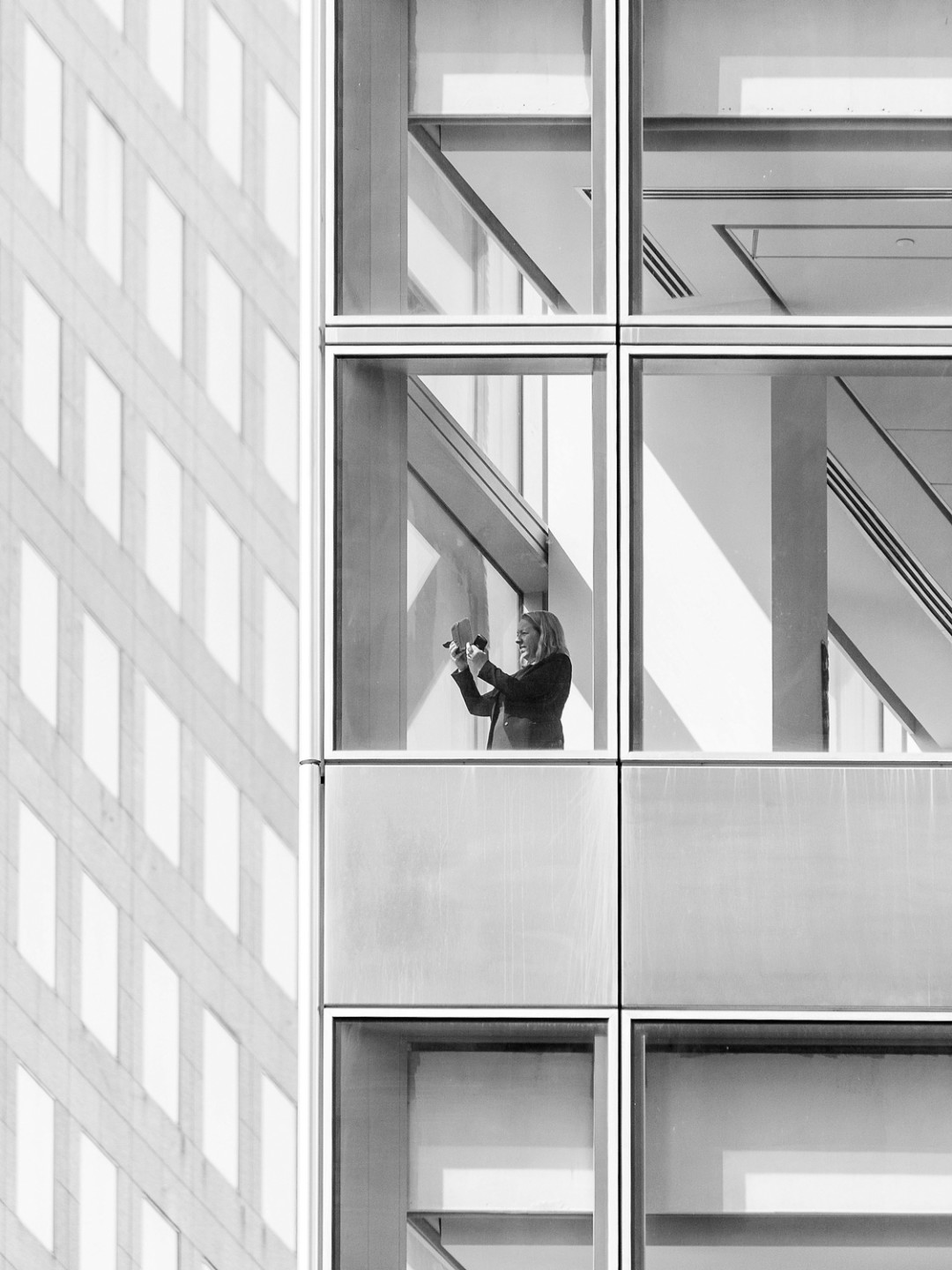
In Mårten Lange’s recent series ”The Mechanism” (2017) we bear cold witness to a hyper-urban environment in which the buildings inhabited by these humans have dehumanised them, and where surveillance technology and electromagnetic fields have come to completely dominate interpersonal relationships. Here, highly networked individuals live behind glossy facades of steel and glass and move along streets and squares surveiled by numerous camera eyes. These hi-tech environments would also appear to be appropriate settings for Anna Uddenberg’s abstract sculptures, in which the body is conspicuous by its absence. These sculptures constitute aberrant fusions of aeroplane interiors, spa furniture and gynaecological stirrups, while also constituting three-dimensional distillations of control, security and luxury – emotional hard currencies in our times.
The Child and Human Blossoming – Beyond an Anthropocentric Worldview
Is there any way out of this apocalyptic darkness that seems to draw ever closer? During our research trips we came across fledgling efforts to look beyond our exploitative culture in the hope of shining a light on other values and alternative forms of shared living. Positive strides have been made, for example, in new feminist evaluations of overlooked historical figures; in a renewed interest in pedagogical theories designed to help children grow and flourish as human beings; and in queer advocacy efforts to unshackle our thoughts and habits from white heteronormativity, allowing us to perhaps rediscover an uncorrupted sexuality, and most important of all, to find new ways of living as a constituent part of nature, beyond an anthropocentric notion of existence.
Malin Franzén is one of several artists in recent years to take an interest in female scholars and writers active during the latter part of the nineteenth and early part of the twentieth centuries. What several of these women, active more than a century ago, have in common is their search for new ways of understanding human relationships to nature and the cosmos, and thus for shaping alternative blueprints for modern society. In Franzén’s video ”Länge lever vi på ruinerna av det förgågna” (For Long We Live on the Ruins of the Past) (2017) we follow in the footsteps of the writer and women’s rights activist Elin Wägner on her 1937 journey to Crete. She here explored the remnants of a much earlier matriarchy, while also hoping to discover a counter-image to the fascist ideology spreading through Europe at the time.
In this part of the exhibition, in an installation by Åsa Norberg and Jennie Sundén, we encounter abstract compositions that in earlier contexts have functioned as support structures for organic growth and mental development. Further into the room Christine Ödlund presents a new installation in which she integrates her on-going research interest in plant communication. This is also where Ingela Ihrman’s performance takes place. The artist, dressed in a larger-than-life flower costume, opens her petals before an audience, going from bud to full flower and inviting viewers to sip from her floral nectaries. The blossoming here seems to address the reclaiming of the body, its sensuality and desire – beyond patriarchy and capitalism’s pervasive influence and with nature as a companion into the mysteries of life.
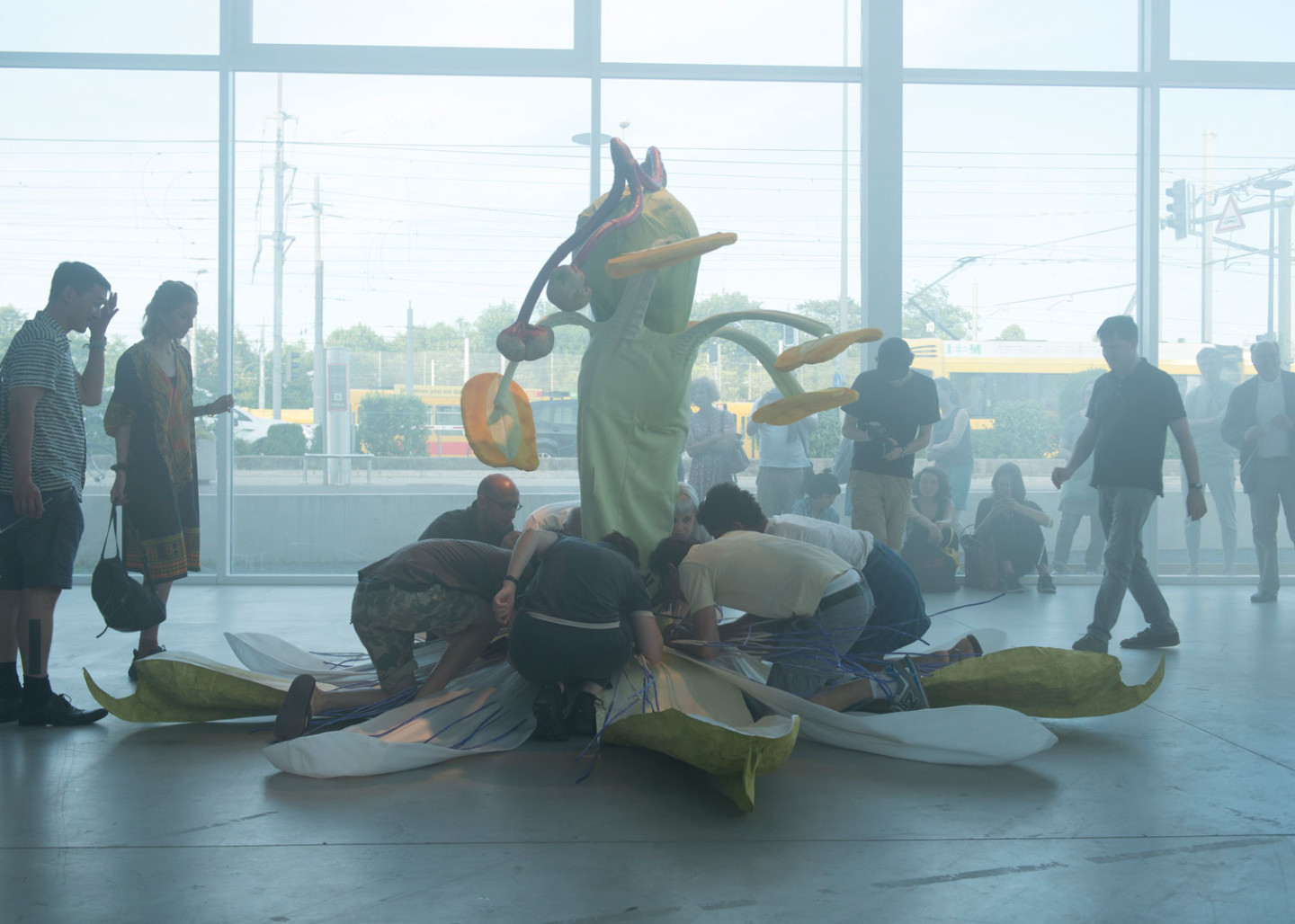
In the course of our research for The Moderna Exhibition, we have come across a remarkable number of artists that through their work have tried to approach the infinite, in the particular hope, perhaps, of being able to examine their own existence from a cosmological bird’s-eye view. Or maybe with the aim to move in the opposite direction, approaching the unexplored depths of our inner lives, where perceptions can emerge that we ordinarily would have no access to in the interconnected intensity of daily life. Housed in this sensory dimension of being is the humble acceptance that we humans will never fully see or understand the whole of which we are only a part, even if we can allow ourselves, for just a little while longer, to be embraced by its unfathomable complexity and beauty.

